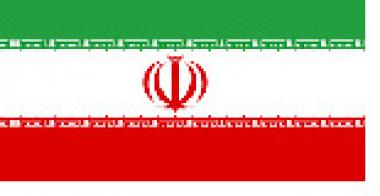IRAN'S TEXTILE AND CLOTHING INDUSTRY WANTS TO INVEST
- But industry continues to be in a crisis
- Germany leading textile machinery supplier again
Teheran (GTAI) - Iran's large, traditional textile and clothing industry fights against foreign competition. Although the manufacturers are protected against imports by import tariffs, industry representatives and the Ministry of Industry are talking about massive illegal imports. In order to improve competitiveness, investments in new plants are necessary, but the companies often lack the necessary financial resources. Textile machines from Germany are in high demand.
Although the Ministry of Industry reports growth for several sectors of the textile and clothing industry for 2015/16 (Iranian year 1394, 03. 21.15 to 03. 20.16), the increased production level remains far below capacity. The data on the average utilization varies greatly, but no estimate is more than 50%, some company representatives report even 30% only. The industry also suffers from quality problems, which are mainly due to the outdated machinery park.
According to official data, there are almost 10,000 factories with about 290,000 employees in the textile and clothing sector. The industry, which is characterized by private ownership, is by government announcements often referred to as a promising economic sector with potential. Nevertheless, according to criticism it is lacking in the necessary support.
Approximately 400 mostly medium and large textile and clothing manufacturers are organized in the Association of Iran Textile Industries (http://aiti.org.ir). The spectrum of the association members ranges from cotton spinning and weaving mills to producers of acrylic and polyester yarns, synthetic fibers, machine-made carpets, wall-to-wall carpet floors, woolen and other blankets and bedspreads, clothing and up to manufacturers of textile machines and spare parts.
The main problem of the Iranian textile and clothing industry is the competition from abroad, particularly from the PR of China and Turkey. The re-exports via the Dubai trade hub have to be added too. Partially high import tariffs are intended to protect the domestic market, but a large part of the imports arrives illegally into the country. A duty of 55% is currently levied on clothing and a reduced rate of 33% applies to deliveries from Turkey. For fabrics 32% are due.
Great interest in modern technology
The Iranian textile industry wants to strengthen its competitiveness both on the domestic and international markets through the modernization of its machinery. The great interest of the sector companies in new technology shows the strong response to conferences and seminars offered by European associations and companies.
In April 2015, the GermanTextile Machinery Association VDMA organized a symposium in Tehran in anticipation of the strong easing of Iran sanctions. About 1,100 local company representatives were able to study the offers from the 36 German textile machinery and accessories manufacturers.
The event showed the interest of the Iranian companies to look for solutions to improve their mostly old, often decades old facilities.
A considerable part of the machinery park came from Europe as already used equipment. A problem were the continuing export controls also. According to industry representatives replacement procurements were made difficult because many parts are classified as dual-use goods. Organizations from Italy and Switzerland also have organized information events for Iran's textile industry.
Machinery import decreased again
The interest in modern technology however leads to limited investments only. Due to the weak financial strength of a large part of the industrial enterprises, intensified state support measures, in particular favorable loans, are requested. The banks lend credits to textile companies with great restraint only and demand high interest rates. According to Iranian customs despite the difficult situation textile and clothing machinery worth USD 324 million were imported in 2015/16. However - this was 11% less than in 2014/15 (USD 364 million).
| HS-Pos. | Description | 2013 | 2014 | 2015 | 2016 -11 months |
|---|---|---|---|---|---|
| Total | 16,248 | 39,966 | 48,993 | 25,827 | |
| 84.44 | Machinery for jet spinning etc. of synthetic or artificial material | 83 | 2,991 | 325 | 1,005 |
| 84.45 | Machines for preparation or processing for spinning and doubling etc. | 2,145 | 6,699 | 7,140 | 2,612 |
| 84.46 | Weaving looms | 8,009 | 20,896 | 30,873 | 11,941 |
| 84.47 | Machines for knitting, sewing, gimping, tulle, lace, embroidery, net knitting and tufting etc. | 642 | 712 | 618 | 1,444 |
| 84.48 | Auxiliary machines and devices for machines of positions 84.44, 84.45, 84.46 or 84.47 | 4,400 | 7,347 | 7,760 | 6,412 |
| 84.49 | Machines for the manufacturing of felts and nonwovens | 6 | 0 | 77 | 0 |
| 84.51 | Machinery and devices for washing, drying, ironing, pressing, etc. (excluding machines of pos. 84.50). | 634 | 915 | 1,629 | 1,672 |
| 84.52 | Sewing machines | 321 | 380 | 543 | 673 |
| 84.53 | Machines and devices for processing of hides etc. | 8 | 26 | 28 | 69 |
Source: Eurostat
Germany is traditionally the leading textile machinery supplier in Iran, followed by Italy. However, the sanction phase brought a turnaround in favor of Asian suppliers. According to VDMA calculations, the most important suppliers of textile machinery exported to Iran in 2013 a value of EUR 85 million only (excluding dryers, and clothing and leather technology), of which 33% were attributed to the PRC, followed by Germany (16%), Turkey (12%), Korea (Rep., 7%) and Italy (5%). Deliveries of clothing and leather technology amounted to EUR 113 million in 2013, led by Korea (Rep.) with 53%, the PRC reached 36%, Germany came to 0.3% only.
The VDMA data for 2015 show for textile machinery Germany as the leading supplier again. At the textile machinery exported to Iran German suppliers accounted for a share of 30%, the PRC fell to 22%, Turkey reached 12%, Korea (rep.) 6% and Italy 4 %. In the clothing and leather technology the Chinese-Korean dominance remained in 2015 (PRC: 49% from EURO 131 million and Korea (rep.): 41%)..
| HS-Pos. | Description | 2013 | 2014 | 2015 | 2016- 11 months |
|---|---|---|---|---|---|
| Total | 84,518 | 133,739 | 103,055 | 75,748 | |
| 84.44 | Machinery for jet spinning of synthetic or artificial fibers | 16,457 | 5,319 | 1,990 | 1,925 |
| 84.45 | Machines for preparation or processing of materials for spinning, doubling etc. | 288 | 2.602 | 2.844 | 1,269 |
| 84.46 | Weaving looms | 2,650 | 6,039 | 4,103 | 1,836 |
| 84.47 | Machines for knitting, gimping tulle, lace, embroidery, knotting and tufting etc. | 6,672 | 10,795 | 8,642 | 7,878 |
| 84.48 | Auxiliary machines and devices for pos.84.44, 84.45, 84.46 or 84.47 etc. |
5,684 | 17,061 | 7,319 | 3,921 |
| 84.49 | Machines for the manufacturing of felts and nonwovens | 2,053 | 2,029 | 5,540 | 2,900 |
| 84.51 | Machinery and devices for washing, drying, ironing, pressing, etc. (excluding machines of pos. 84.50). | 11,368 | 15,894 | 16,559 | 13,728 |
| 84.52 | Sewing machines | 33.567 | 49.714 | 38.191 | 36.182 |
| 84.53 | Machines and devices for the processing of hides | 5.779 | 24.286 | 17.867 | 6.109 |
Source: China Customs
According to Eurostat exports of textile, clothing and leather industry machines of the EU28 Group to Iran increased between 2013 and 2015 from EUR 38 million to EUR 89, with Germany accounting for 42% respectively 55%. Italy delivered EUR 10.4 million in 2015 (2014: EUR 14.0 million, 2013: 6.3 million). The deliveries of the EU28 Group and Germany also were declining in 2016.
Iran, textile and clothing industry
Robert Espey, Germany Trade & Invest www.gtai.de






